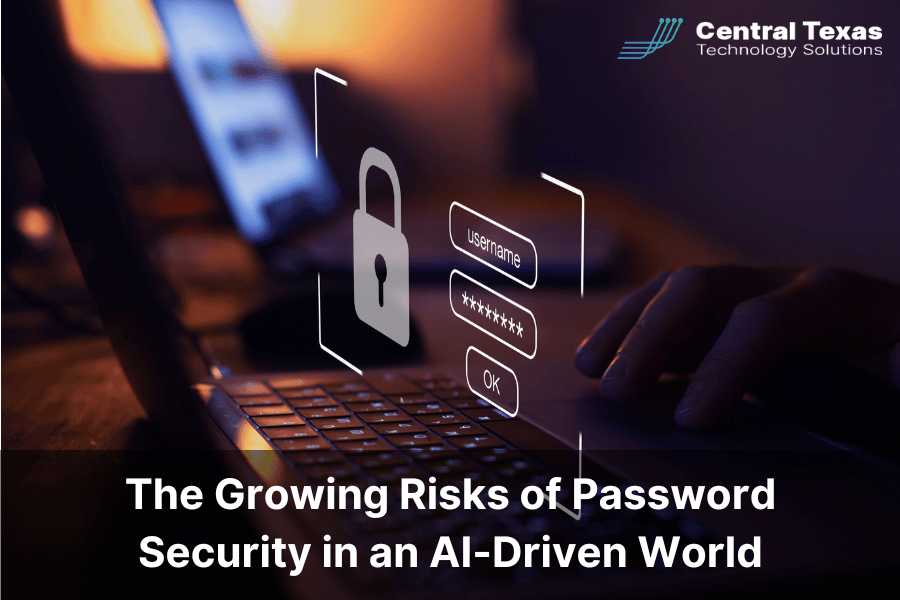
Password Security: Why Trust in Passwords Is No Longer Enough
How many passwords do you juggle in your daily life? Or better yet, how many accounts rely solely on a username and password to secure sensitive information? Despite countless warnings, most people still believe passwords provide adequate protection. In fact, a survey from hardware security key provider Yubico revealed that 39% of respondents think passwords are the best way to authenticate users.

Yet, this widespread trust in passwords persists even as AI-driven security threats expose their vulnerabilities. From virtually undetectable phishing scams to brute-force attacks, AI is making it easier than ever for cybercriminals to exploit weak password security.
Your Passwords Are No Longer Enough
Passwords have long been the go-to for securing accounts, but their limitations are becoming increasingly clear. Consider these common issues:
- Weak Password Choices: Many users still rely on easy-to-guess passwords like "123456" or "password."
- Reuse Across Accounts: Repeating the same credentials across work and personal accounts amplifies risk.
- Phishing Vulnerabilities: Even the most secure passwords can be compromised by phishing attacks.
Despite advancements in password management tools and security protocols, passwords alone cannot protect against the growing sophistication of AI-driven threats.
The AI Threat: A Dark New Era for Password Security
Phishing scams have always been a problem, but AI tools are taking them to a new level. Here’s how AI is amplifying the risks:
- Sophisticated Phishing Emails: AI can craft personalized and convincing emails that trick even the savviest users.
- Voice and Video Cloning: Cybercriminals use AI to mimic trusted contacts, increasing the success of scams.
- Automated Attacks: AI-powered automation enables hackers to launch widespread attacks faster than ever.
These developments make it easier for hackers to steal credentials, infect systems with malware, and bypass network defenses.
Strengthening Your Password Security Against AI Threats
Although passwords remain a piece of the cybersecurity puzzle, they’re not enough to combat today’s AI-driven threats. To improve your security posture, consider these strategies:
- Implement Multi-Factor Authentication (MFA):
- Require an additional authentication step, such as a code sent to your phone or a biometric scan.
- This creates an extra barrier for hackers to overcome.
- Invest in Employee Training:
- Educate employees about phishing scams and how to recognize suspicious activity.
- Regular training sessions ensure everyone stays up to date on the latest threats.
- Leverage Advanced Cybersecurity Tools:
- Use AI-powered tools to detect and block malware.
- Employ software that can flag unusual behavior and stop attacks in their tracks.
- Enforce Strong Password Policies:
- Require the use of password managers to generate and store unique, strong passwords.
- Regularly prompt users to update their credentials.
The Role of Education in Addressing AI Security Threats
One of the simplest yet most effective ways to mitigate cybersecurity risks is through employee education. Alarmingly, Yubico’s survey revealed:
- 40% of employees have never received security training from their employer.
- 31% say their company has never provided guidance on securing work accounts.
Training should focus on recognizing phishing attempts, understanding password vulnerabilities, and using additional security tools like MFA.
FAQs About Password Security and AI Threats
1. Why are passwords no longer enough to secure accounts? Passwords are vulnerable to phishing, brute-force attacks, and credential reuse. AI has made these attacks more effective, highlighting the need for additional security measures.
2. What is the best way to protect accounts from AI-driven threats? Implement multi-factor authentication, train employees to recognize phishing scams, and use advanced cybersecurity tools to monitor and block threats.
3. How can employee training improve password security? Training helps employees understand password vulnerabilities, recognize phishing attempts, and adopt best practices like using strong passwords and MFA.
Contact CTTS today for expert IT support and managed services in Austin, TX. Let us handle your IT so you can focus on growing your business. Visit CTTSonline.com or call us at (512) 388-5559 to get started!
